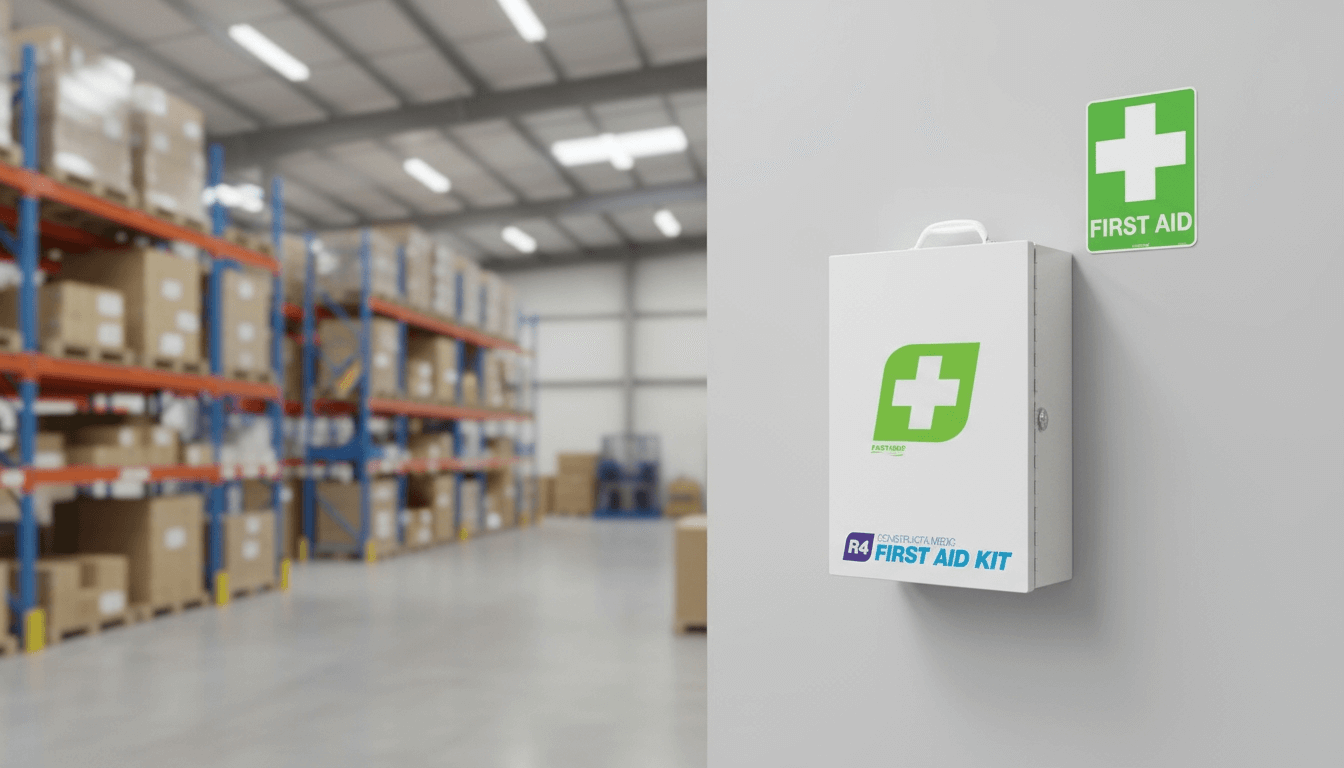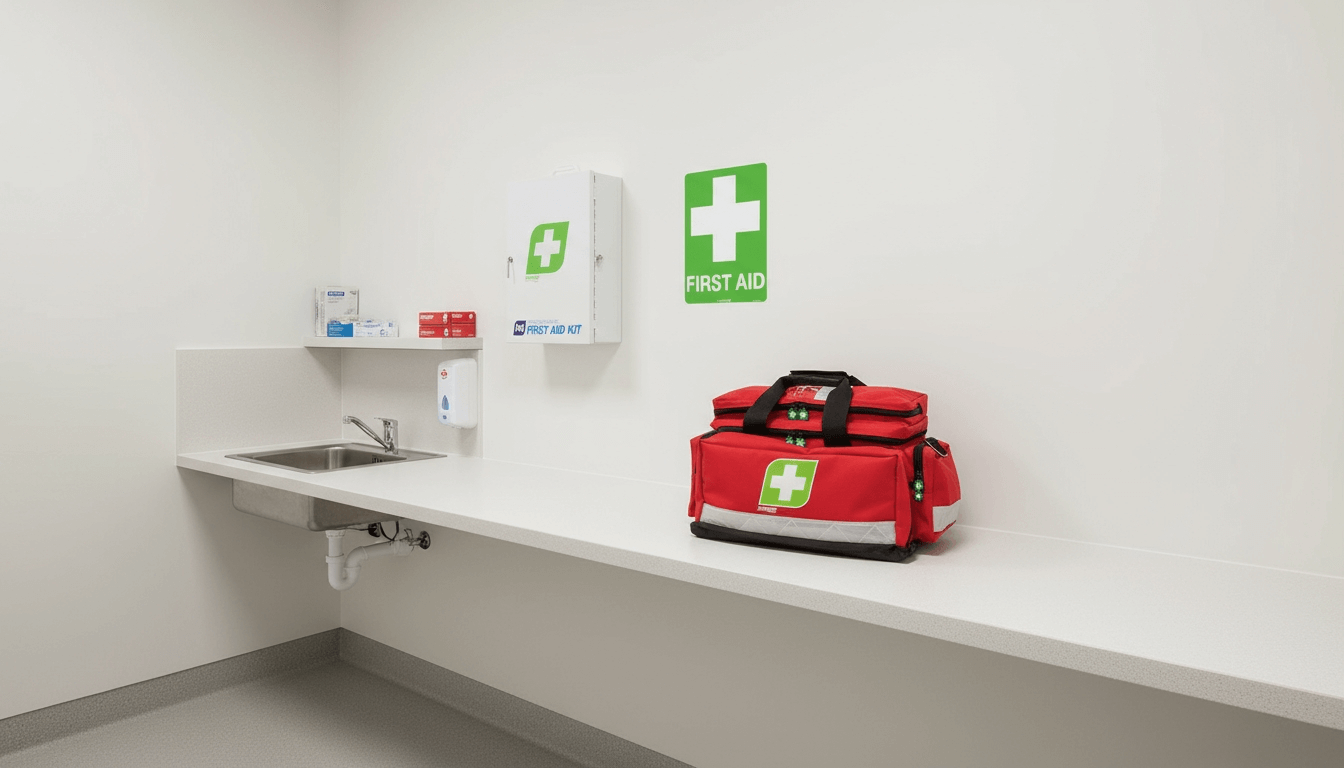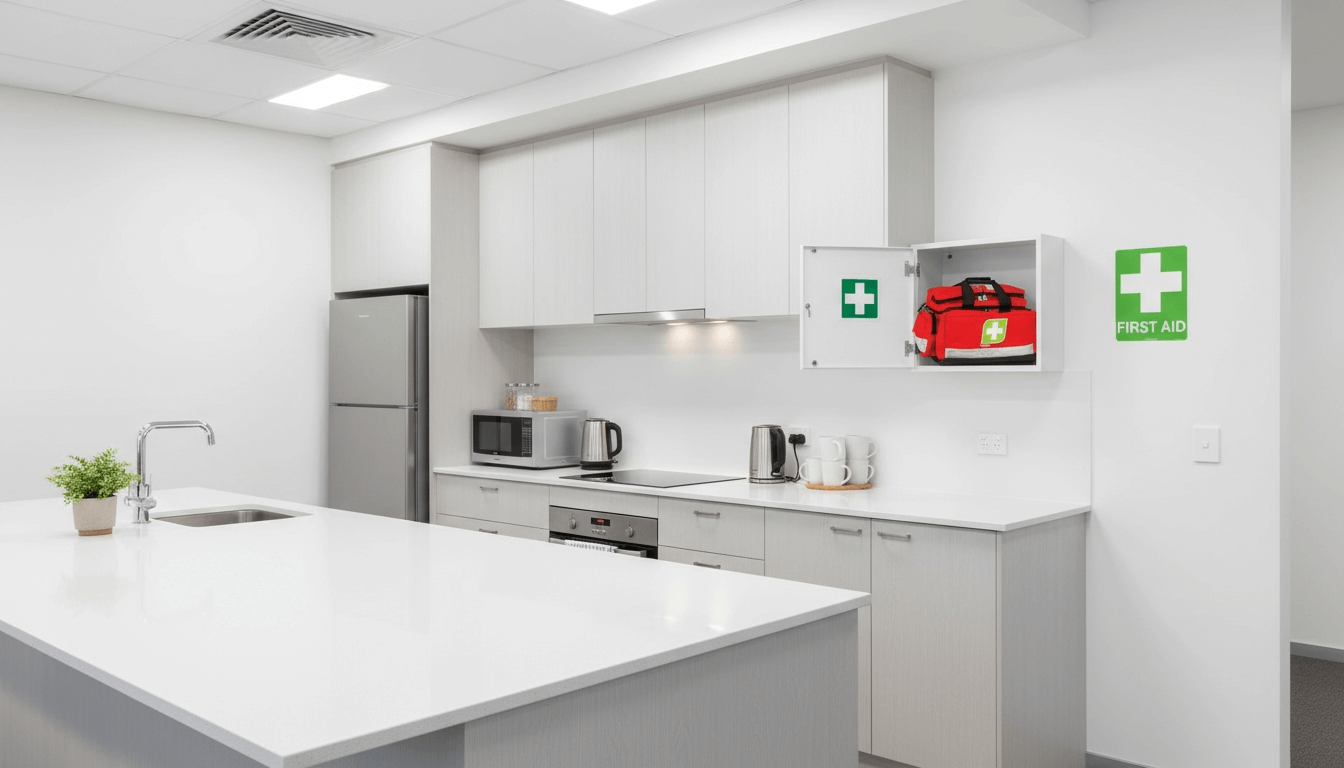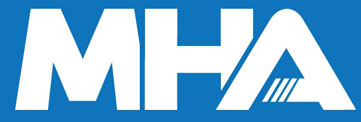Best Practices for First Aid Kits in Warehouses
Date Posted:16 October 2025
Don’t risk being unprepared. Learn best practices for first aid kits in warehouses to protect workers and comply with safety regulations.
Verdex Insights: At a Glance
-
The Challenge: Warehouse environments face a higher risk of injury due to heavy machinery, manual handling, and fast-paced operations. Emergency preparedness is essential for WHS compliance and worker safety.
-
The Insight: A well-stocked, clearly located first aid kit is critical for fast response and compliance. Industrial-grade kits designed for warehouse conditions help prevent minor injuries from becoming major incidents.
-
The Verdex Solution: Verdex supplies WHS-compliant first aid kits and safety gear purpose-built for warehousing, logistics, and manufacturing. Our durable, industrial-grade products help businesses stay prepared, protect staff, and maintain safe, compliant workplaces.
Why First Aid Kits Are Critical in Warehouse Environments
Warehouses are dynamic and often hazardous workplaces. With heavy machinery, forklifts, shelving systems, and manual handling activities, the risk of injury is significantly higher than in office-based settings. Common incidents include cuts, crush injuries, sprains, and even chemical exposure.
In these fast-paced environments, immediate access to a well-stocked first aid kit can be the difference between a minor injury and a serious medical emergency. A prompt response also limits downtime and ensures compliance with Workplace Health and Safety (WHS) regulations, which mandate that first aid equipment must be accessible, suitable for the risks, and clearly signed.
Beyond legal obligations, having visible and well-maintained first aid kits helps build a culture of safety. It shows that you value your workers' wellbeing, something that can positively impact morale and productivity across your team.
Common Workplace Injuries in Warehouses
Warehouses present a wide range of potential injury types due to the varied tasks performed within them. Here are some of the most common:
-
Cuts and abrasions: Often caused by sharp packaging tools, broken pallets, or unguarded edges on shelving or machinery.
-
Sprains and strains: Frequently occur when lifting, stacking, or moving heavy loads incorrectly or without mechanical aid.
-
Forklift-related injuries: These include crush injuries, foot impacts, and collisions—especially in shared pedestrian/forklift areas. Installing safety barriers and security bollards alongside first aid kits helps reduce these risks significantly.
-
Eye injuries: Dust, wood splinters, or chemical splashes can cause eye irritation or damage, particularly in unpacking or processing zones.
-
Slips, trips, and falls: Resulting from wet surfaces, misplaced tools, or uneven flooring—especially near loading docks or entryways.
-
Burns or chemical exposure: In warehouses handling flammable goods, industrial cleaners, or batteries, chemical burns can be a serious concern.
Having the right first aid resources readily available is key to managing these types of incidents effectively.
What Should Be in a Warehouse First Aid Kit?
A warehouse first aid kit should include general first aid supplies along with items that address the specific risks of an industrial environment.
Basic Items
-
Adhesive bandages (Band-Aids)
-
Sterile wound dressings
-
Antiseptic wipes
-
Non-stick pads
-
Disposable gloves
-
Tape and scissors
Gloves and other PPE clothing and safety gear should always complement your first aid kit to keep responders safe during treatment.
Industrial-Specific Supplies
-
Burn gel and burn dressings
-
Saline solution for wound or eye irrigation
-
Trauma dressings for heavy bleeding
-
Eye wash bottles and pods
-
Snake bite bandages (particularly in regional or outdoor warehouses)
Emergency Equipment
-
CPR mask or resuscitation face shield
-
Emergency thermal blanket
-
First aid manual or step-by-step guide
These kits should be tailored to the size and activity of the warehouse, and replenished regularly to remain effective. As a trusted partner, Verdex supports warehouses nationwide with compliant safety gear and expert advice.
Where to Locate First Aid Kits in a Warehouse
Proper placement of first aid kits is just as important as their contents. WHS guidelines stress that kits must be clearly visible, unobstructed, and signed with appropriate first aid signage. Pairing kits with workplace safety signage ensures they can be found quickly in an emergency.
Strategic locations include:
-
Loading bays – where manual handling and forklift activity are highest
-
Administrative or office areas – for easy access by supervisors or first aid officers
-
Lunchrooms or break areas – where minor kitchen accidents may occur
-
Designated first aid rooms – for larger facilities that require dedicated treatment spaces
Additionally, portable kits can be mounted on forklifts or carried by mobile staff working across large or multiple warehouse zones.
Clear signage and unobstructed access are crucial during emergencies, when every second counts.
Why You Should Choose Industrial-Grade First Aid Kits
Unlike standard retail kits, industrial-grade first aid kits are purpose-built to suit demanding workplaces like warehouses.
Here’s why they’re essential:
-
Built for durability – Often enclosed in metal or heavy-duty plastic cases that withstand dusty, wet, or rugged environments.
-
Comprehensive contents – Covering more than just cuts and bruises, they include trauma supplies, burn care, and CPR equipment.
-
WHS-compliant – Industrial kits meet or exceed Safe Work Australia’s First Aid in the Workplace Code of Practice.
At Verdex, we offer warehouse-specific kits that are pre-packed, compliant, and available in various configurations—from wall-mounted cabinets to portable kits for mobile teams. We also provide restocking supplies and customised solutions tailored to your specific layout and risks.
Extra Items to Consider
In addition to your first aid kits, the following equipment can greatly improve warehouse emergency preparedness:
-
AED (Automated External Defibrillator) – Life-saving in cardiac emergencies, especially in large facilities.
-
Eyewash stations – For fast response to dust or chemical exposure.
-
Extra PPE – Such as face masks, gloves, and spill containment gear.
These items provide added layers of safety and may be required under your site’s WHS risk assessment.
Keep Your Warehouse Prepared with First Aid Kits
Verdex offers first aid kits specifically designed for warehouse and industrial environments across Australia. We understand the hazards you face daily—whether it’s forklift traffic, chemical exposure, or manual handling injuries.
Our kits are:
-
Built tough for Australian workplaces
-
Fully compliant with WHS guidelines
-
Available in various sizes and formats
-
Easy to install and restock
Get in touch with the Verdex team today to discuss your site’s needs or arrange a quote. We also supply a full range of safety gear, including bollards, spill control, PPE, signage, and more to help you maintain a safe, compliant facility.
Get in Touch with Verdex
At Verdex, we provide first aid kits and safety solutions designed specifically for warehouse and industrial environments. Our team can help you choose the right kit for your site and keep your workplace compliant.
-
Email us at sales@verdex.com.au
-
Fill out our online contact form

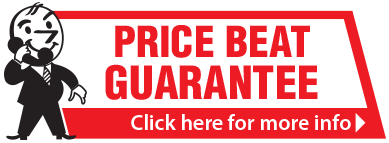






























































































































 Trolleys & Hand Trucks
Trolleys & Hand Trucks Cage Trolleys
Cage Trolleys Cleaning Carts & Trolleys
Cleaning Carts & Trolleys Construction Trolleys
Construction Trolleys Custom Trolleys
Custom Trolleys Hand Trucks & Dollies
Hand Trucks & Dollies Laundry/Linen Trolleys
Laundry/Linen Trolleys Lifting Trolleys
Lifting Trolleys Order Picking Trolleys
Order Picking Trolleys Panel Cart Trolleys
Panel Cart Trolleys Platform Trolleys
Platform Trolleys Powered Trolleys
Powered Trolleys Shelf & Tiered Trolleys
Shelf & Tiered Trolleys Shopping Trolleys
Shopping Trolleys Stainless Steel Trolleys
Stainless Steel Trolleys Tool Trolleys
Tool Trolleys Utility & Service Carts
Utility & Service Carts Lifting & Handling Equipment
Lifting & Handling Equipment Forklift Attachments
Forklift Attachments Jib Attachments
Jib Attachments Lifting Hoists & Pallet Hooks
Lifting Hoists & Pallet Hooks Load Skates & Tow Tugs
Load Skates & Tow Tugs Manual Stackers & Lifters
Manual Stackers & Lifters Pallet Jacks
Pallet Jacks Pallet Lifters
Pallet Lifters Pallet Rotators & Dispenser
Pallet Rotators & Dispenser Powered Pallet Trucks & Electric Lifters
Powered Pallet Trucks & Electric Lifters Scissor Lift Trolleys and Tables
Scissor Lift Trolleys and Tables Conveyor Equipment
Conveyor Equipment Conveyor Frames & Stands
Conveyor Frames & Stands Roller & Skate Conveyors
Roller & Skate Conveyors Ladders & Access Equipment
Ladders & Access Equipment Container & Yard Ramps
Container & Yard Ramps Ladders & Step Stools
Ladders & Step Stools Work Platforms & Crane Cages
Work Platforms & Crane Cages Drum Handling Equipment
Drum Handling Equipment Drum Storage & Bunding
Drum Storage & Bunding Drum Trolleys & Lifters
Drum Trolleys & Lifters Forklift Drum Handling
Forklift Drum Handling Waste Handling & Bins
Waste Handling & Bins Bin Lifters & Tippers
Bin Lifters & Tippers Plastic Waste & Wheelie Bins
Plastic Waste & Wheelie Bins Steel Waste & Tipping Bins
Steel Waste & Tipping Bins Waste Carts
Waste Carts Dangerous Goods Storage & Spillage
Dangerous Goods Storage & Spillage Aerosol Cans Storage Cages
Aerosol Cans Storage Cages Bunded Pallets & Storage
Bunded Pallets & Storage Corrosive Goods Storage Cabinets
Corrosive Goods Storage Cabinets DG Storage & Trolleys
DG Storage & Trolleys Flammable Liquid Cabinets
Flammable Liquid Cabinets Forklift Gas Storage Cages
Forklift Gas Storage Cages Site Storage
Site Storage Spill Kits
Spill Kits Shelving & Storage Equipment
Shelving & Storage Equipment Stillage & Transport Cages
Stillage & Transport Cages 750 Series Cage Configurations
750 Series Cage Configurations Heavy Duty Cabinets
Heavy Duty Cabinets Heavy Duty Shelving
Heavy Duty Shelving Mega Bins & Pallets
Mega Bins & Pallets Packing & Workbenches
Packing & Workbenches Parts Trays & Stor-Pak Bins
Parts Trays & Stor-Pak Bins Pegboard & Louvre Panels
Pegboard & Louvre Panels Plastic Bins & Crates
Plastic Bins & Crates Plastic Handling Solutions Bins
Plastic Handling Solutions Bins Plastic Pallets
Plastic Pallets Stack & Nest Bins
Stack & Nest Bins Pallet Racking Accessories
Pallet Racking Accessories Workplace Equipment
Workplace Equipment Modular Workbenches
Modular Workbenches Electric Height-Adjustable Workbenches
Electric Height-Adjustable Workbenches Floor Matting
Floor Matting General Workplace Equipment
General Workplace Equipment Industrial Weighing Scales
Industrial Weighing Scales Packaging Machinery
Packaging Machinery Stationery Cupboards
Stationery Cupboards Storage and Stillage Cages
Storage and Stillage Cages Tool Trolleys
Tool Trolleys Tooling Cabinets
Tooling Cabinets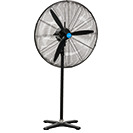 Workshop Fans and Coolers
Workshop Fans and Coolers Safety Barriers, PPE & Signage
Safety Barriers, PPE & Signage Barriers & Bollards
Barriers & Bollards First Aid Equipment
First Aid Equipment Gloves, Knives and PPE
Gloves, Knives and PPE Signage
Signage Cleaning & Site Supplies
Cleaning & Site Supplies Cleaning Equipment
Cleaning Equipment Cleaning Trolleys
Cleaning Trolleys Rubbish Bins
Rubbish Bins Signs & Traffic Supplies
Signs & Traffic Supplies Construction Equipment
Construction Equipment Construction Trolleys
Construction Trolleys Waste Handling
Waste Handling General Site Equipment
General Site Equipment Concrete Equipment
Concrete Equipment Site Storage
Site Storage Lifting Equipment
Lifting Equipment Verdex Specials
Verdex Specials
